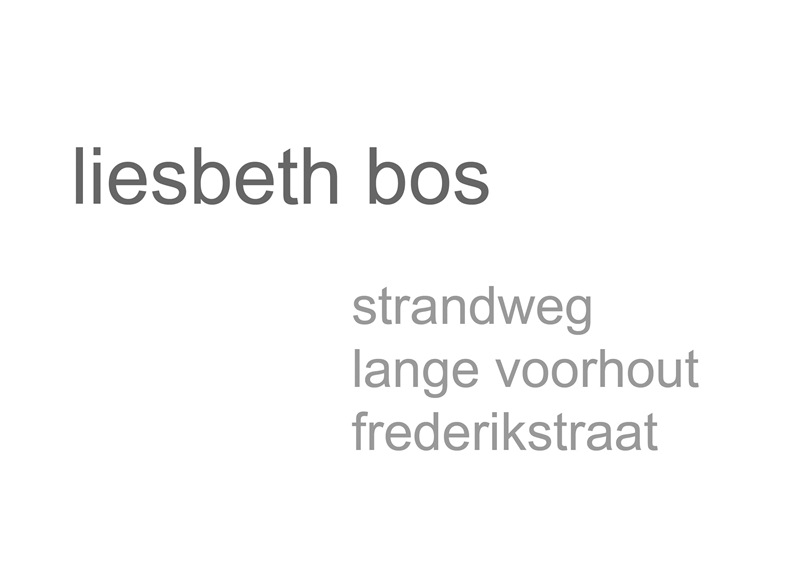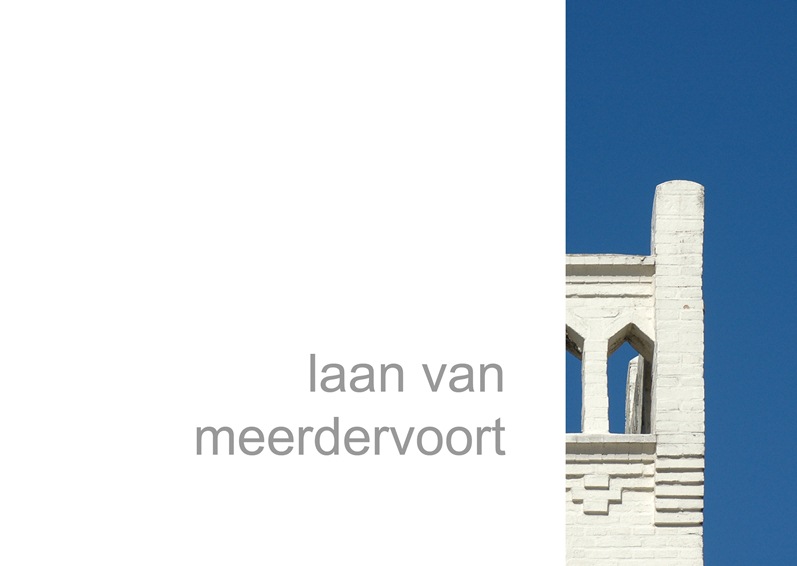text 'plaatsbepaling, vijf observaties'
openings exhibition JCA DE KOK
Den Haag 2009
text Philip Peters
from 'plaatsbepaling, vijf observaties', publication opening art-initiative JCA DE KOK on 12 september 2009.
 |
 |
|
No parts of one entity Two works of art The one work: three, 3D forms made of painted white MDF on an even so white wall. The forms: in the bottom edge two isolated parts of a bicycle, a steer and a saddle, higher up on the wall the top part of an old-fashioned streetlight . The other work: eight not very big photo’s (30 x 40 cm) off the top of facades of buildings, positioned on a daklijst and leaning against the wall. In both cases, as you would remark, there is nothing going on. The first work left out a lot, but still it is an image of a street lantern with a bike leaning against it. In the other work the top part of the houses are just buzzy being itself, even though they are also isolated from their surroundings because every context is absent and the relation between the parts is only established by their function. This is not an artwork of dramatic gesture. It just seems to looks beautiful, clean, esthetical and minimalistic. But whoever looks closely for some time – and you have to do it, otherwise it will not reveal its secrets and why should it? For art we, the considering viewers, have to work hard–slowly gets an uneasy feeling, as if something is not right. Titles are innocent enough, just names of the Hague streets. The work with bicycle and street light is “Strandweg, Lange Voorhout, Frederikstraat”, the other is named “Laan van Meerdervoort”. Places every inhabitant of The Hague knows well. The fact the first works title consist of three street names and therefore is corresponding with the three elements of which the overall work is build up gives us an entrance in this work. Is this work really about a bike parked next to a street light? Why three street names used as title? Should that have to do anything with the uncomfortable feeling this work gives you?
|
 |
However comfortable and harmonious this installation seems, it is impossible from reality point of view. A metaphor maybe for Art. In Art after all everything is possible, no coincidental meeting too surrealistic. More important even: Although submitted from the same area of meaning, all three visual elements in this installation have nothing to do with each other. They are forced together, condemned to each other without really connecting. They exist, as a manner of speaking, alongside each other, without ever touching. So close and so near real connecting but sadly never getting there; just as people can live together but aren’t capable of really reaching out and truly communicating. Just like this whole world, our world, makes up unity, without ever going to be really united. In this sense, in which the small can be projected to eternity, the spiritual, this work is dramatic: an imagination of human failure. The second work reveals even less information. Eight upper part of house facades, positioned centrally, photographed against a uncompromising steel blue sky, not the comforting blue of a summer day on the beach, more like a two dimensional confrontational wall of blue, escaping it isn’t possible. Again you can speak of fragments out of context, context of the endless Laan van Meerdervoort, in turn boring and architectonic and historic interesting. These fragment speak for themselves, out of their daily picturesque surrounding they are disturbing. Every piece becomes as inaccessible as its steel blue background against which they stand out on the one hand but on the other hand they reflect, as a series, on almost exotic images with a communal sign, the upstanding pinnacles who seem to pinch a hole in the blue. The appearance of the stately The Hague mansion seems to be exchanged for that of an anonymous, inaccessible fortress, all familiarity is gone, while in the works title and at first glance this was suggested. Result: a strange sort of isolation, mankind can’t feel at home any more in its own environment. These works of art call out one question, maybe the question of our time: Where am I? Written by art critic Philp Peters
|
 |
